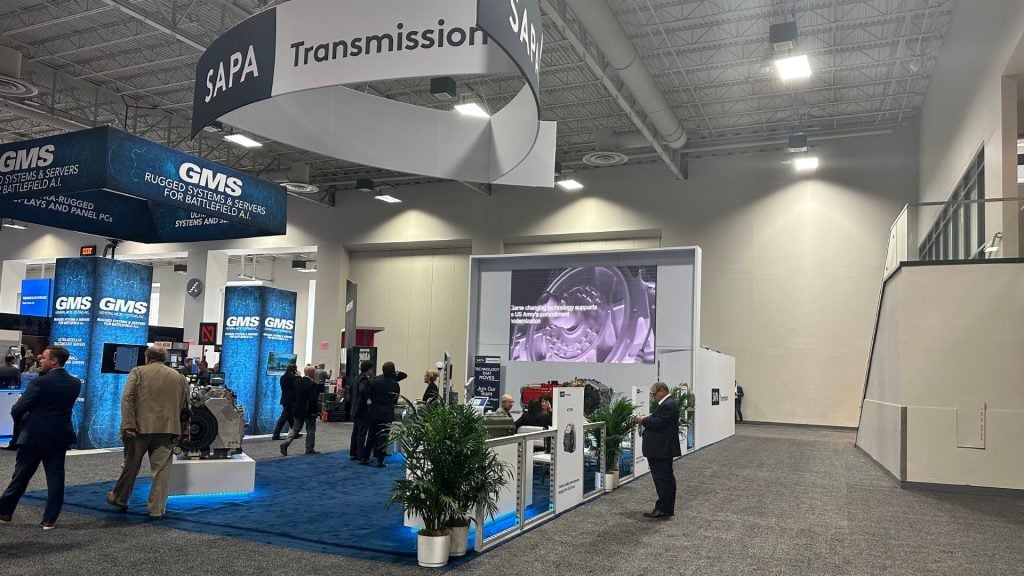
Introduction
As the trade show industry continues to evolve, so too does exhibit design. The next decade promises to bring exciting advancements that will transform the way brands connect with their audiences on the trade show floor. From cutting-edge technology to sustainable practices, the future of exhibit design is poised to be more innovative, engaging, and forward-thinking than ever before.
Here’s a look at the key trends and developments that industry leaders, trade show veterans, and marketing strategists should watch for in the coming years.
1. Immersive Experiences Will Dominate
The future of exhibit design is all about immersion. Attendees no longer want to simply view a product or listen to a sales pitch; they want to be fully immersed in an experience that engages all their senses. This shift towards experiential marketing is driving the demand for exhibits that create memorable, multi-sensory experiences.
Expect to see more use of virtual reality (VR), augmented reality (AR), and mixed reality (MR) technologies in booth designs. These tools allow brands to transport attendees to virtual worlds, interact with products in new ways, and create personalized experiences that leave a lasting impression.
Pro Tip: As immersive experiences become more prevalent, the key to success will be integrating technology seamlessly into your exhibit design. The technology should enhance the experience without overshadowing your brand’s message.
2. Sustainability Will Be Non-Negotiable
Sustainability is no longer just a buzzword; it’s becoming a fundamental aspect of exhibit design. As environmental concerns continue to grow, brands are under increasing pressure to demonstrate their commitment to sustainable practices. This shift is leading to the adoption of eco-friendly materials, energy-efficient technologies, and designs that minimize waste.
In the next decade, expect to see a rise in modular booth designs that can be reused and reconfigured for multiple shows. Sustainable materials, such as recycled plastics and biodegradable elements, will become the norm. Additionally, energy-efficient lighting and digital displays will help reduce the carbon footprint of trade show exhibits.
Pro Tip: To stay ahead of the curve, brands should not only adopt sustainable practices but also communicate their commitment to sustainability to attendees. This can be achieved through clear messaging, eco-certifications, and by showcasing the sustainable features of your booth.
3. Data-Driven Design Will Enhance Personalization
The future of exhibit design will be increasingly data-driven. As brands collect more data on attendee behavior, preferences, and interactions, this information will be used to create highly personalized exhibit experiences. The ability to tailor the exhibit to individual visitors’ needs and interests will become a key differentiator.
For example, data analytics can be used to customize digital content based on the attendee’s industry, role, or previous interactions with the brand. Real-time data can also inform on-the-fly adjustments to booth layouts or product displays to better align with visitor preferences.
Pro Tip: To leverage data-driven design effectively, brands need to invest in analytics tools and technologies that can capture and analyze visitor data. Additionally, privacy and data security will be critical considerations, so ensure that your data collection practices comply with regulations and are transparent to attendees.
4. The Rise of Hybrid and Virtual Exhibits
The COVID-19 pandemic has accelerated the adoption of virtual and hybrid trade shows, and this trend is here to stay. As we move into the next decade, expect to see more exhibits that blend physical and virtual elements, offering attendees the flexibility to participate in-person or remotely.
Hybrid exhibits allow brands to reach a wider audience by combining the impact of a physical presence with the accessibility of a virtual one. Virtual booths, live-streamed presentations, and online networking opportunities will complement traditional exhibit designs, providing a seamless experience for all attendees.
Pro Tip: When designing a hybrid exhibit, ensure that the virtual experience is as engaging and interactive as the physical one. Invest in high-quality streaming, interactive platforms, and virtual reality elements to create a cohesive experience across both mediums.
5. Minimalist and Modular Designs Will Gain Popularity
As exhibit spaces become more flexible and multi-functional, minimalist and modular designs will gain traction. The future of exhibit design will focus on simplicity, versatility, and functionality. Modular booth designs that can be easily reconfigured to suit different spaces, products, or audiences will become increasingly popular.
Minimalist designs that prioritize clean lines, open spaces, and uncluttered layouts will help brands create a sophisticated and professional appearance. This approach also allows for greater flexibility in how the space is used, enabling brands to adapt quickly to changing needs or unexpected challenges.
Pro Tip: To create a successful minimalist or modular exhibit, focus on quality over quantity. Invest in high-quality materials and design elements that can be easily adapted and reused. This not only enhances the visual appeal of your booth but also supports sustainability efforts.
6. Integration of AI and Smart Technologies
Artificial intelligence (AI) and smart technologies are set to revolutionize exhibit design in the coming decade. From AI-powered chatbots that engage with attendees to smart displays that adapt content based on visitor interactions, these technologies will make exhibits more interactive, personalized, and efficient.
AI can also assist with data collection and analysis, helping brands understand visitor behavior and optimize their exhibit design in real-time. Smart technologies, such as IoT devices, will enable more efficient booth management, from lighting and temperature control to inventory tracking.
Pro Tip: To successfully integrate AI and smart technologies into your exhibit, focus on creating a seamless and intuitive user experience. The technology should enhance the visitor experience without feeling intrusive or overwhelming.
7. Collaborative and Co-Creation Spaces
The future of trade shows will see a shift towards more collaborative and co-creative spaces. Instead of simply showcasing products, brands will create environments where attendees can collaborate, brainstorm, and co-create with the brand. These interactive spaces will foster deeper connections and drive more meaningful engagements.
For example, brands might offer workshops, design labs, or co-working spaces within their booths, where attendees can contribute ideas or participate in product development. This approach not only engages visitors but also provides valuable insights and feedback for the brand.
Pro Tip: When designing collaborative spaces, ensure they are flexible and adaptable to different group sizes and activities. Comfortable seating, ample workspaces, and the right technology will be essential for creating a productive and engaging environment.
Conclusion: Embrace the Future of Exhibit Design
The next decade will bring significant changes to exhibit design, driven by advancements in technology, a growing emphasis on sustainability, and the need for more personalized and immersive experiences. For industry leaders, trade show veterans, and marketing strategists, staying ahead of these trends will be key to maintaining a competitive edge.
At XS Worldwide, we are committed to helping brands navigate the future of exhibit design with innovative solutions that align with the latest industry trends. By embracing these changes and continuously evolving our approach, we ensure that our clients remain at the forefront of the trade show industry, ready to make a lasting impact in the years to come.


 Global
Global Europe
Europe

